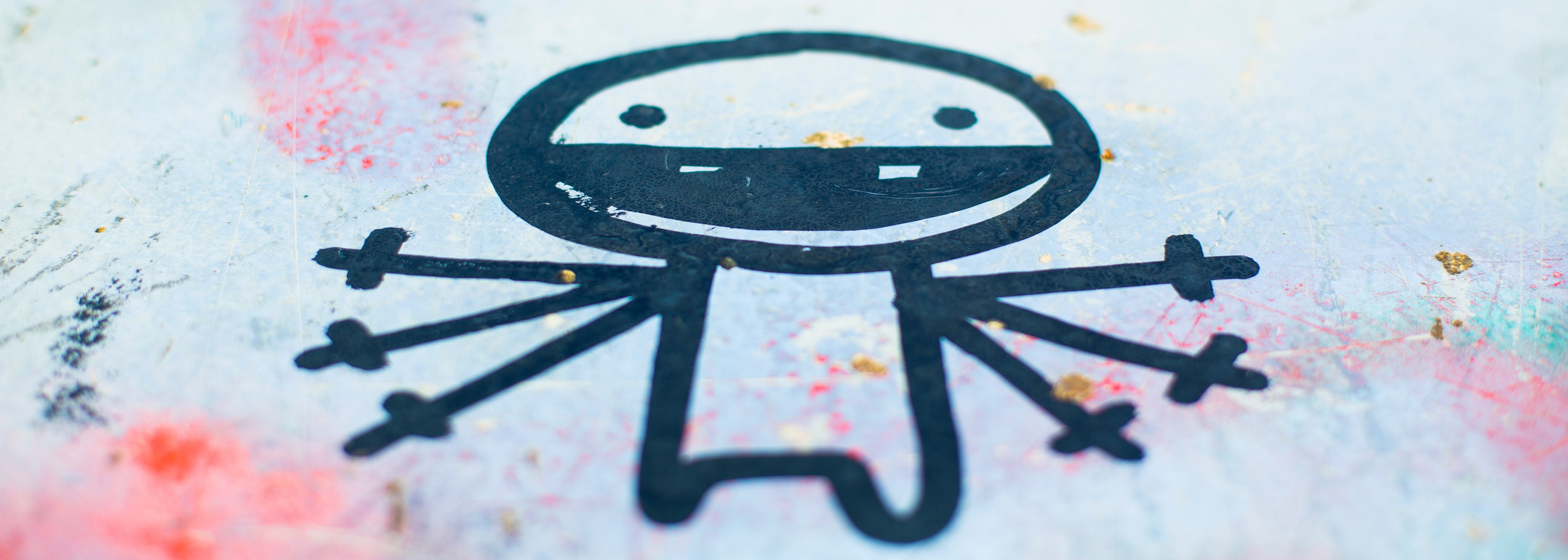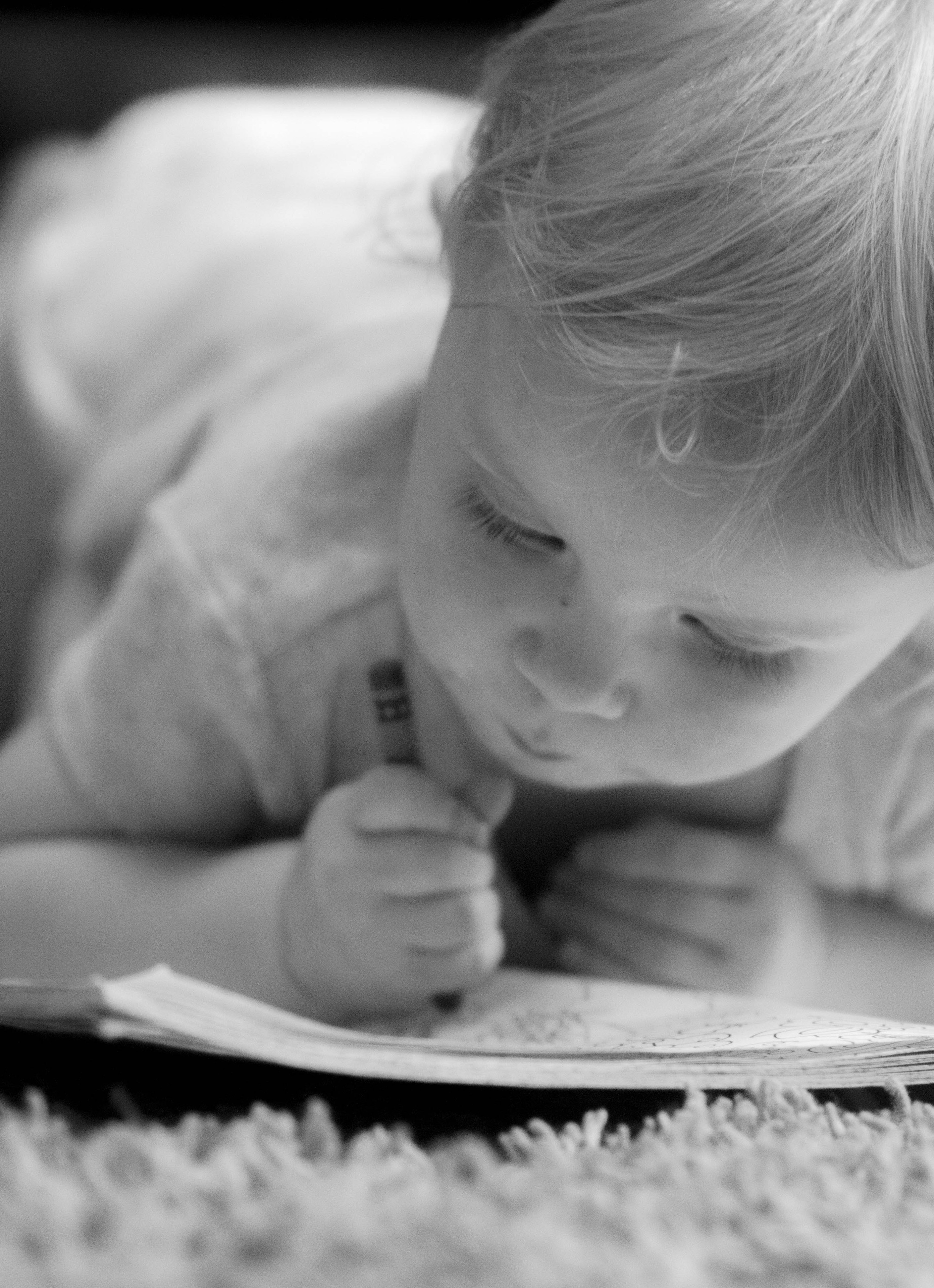While recognizing that the creative act is healing in and of itself, drawings and paintings, particularly spontaneous drawings, can be viewed on more than one level. They convey a literal or obvious message, but there is also an underlying language of symbols with cross-cultural and universal meanings.

Drawing, by Markus Spiske
Consciously or unconsciously, the mind influences the images on the paper in color, form, shape and content, and these images need to be treated with respect because they reveal the inner self. This knowledge enables the therapist to use the drawings as a tool for communication and provides both patient and therapist with a greater understanding of the patient’s inner world.
Combining my backgrounds in nursing and art, I have been working as an art therapist in a hospital and other settings for the past thirteen years. There I have had the opportunity to see art as healing in many different ways.
 |
| Baby Drawing, by Drew Rae |
Dr. Elisabeth Kubler-Ross introduced me to the field when she spoke and wrote, in the late 1970s, about the use of drawings with the terminally ill and their families. Dr. Bernie Siegel also was a pioneer in using drawings with his cancer patients. While most children are willing and eager to draw, many adults need a little more coaxing because somewhere around the fifth grade they decide they are not an artist! Skill in drawing is not a prerequisite however; merely a willingness to experiment is the best starting point along with a box of Crayolas. Crayolas connect us to childhood. I have seen many people pick them up and smell them before starting to draw, and a funny smile appears on their face.
One of the first things I learned in working with hospitalized children is that they usually indicate their diagnosis or symptoms in some way in their drawings (though not asked to do so). It is a wonderful way for children with life-threatening diseases to reveal and discuss their fears and concerns, which are often not what adults think they are.
Drawings are useful visual images that can be developed to remove fears and enhance the effectiveness of treatments. In the case of a 12-year-old girl who loved horses and was afraid during her radiation treatments, we drew many horses all carrying cancer cells and galloping away with them. She took this picture with her during treatments and used it to think positively about what was happening and therefore worried less about the process; she also went into remission. This type of positive imagery is useful with all cancer patients.
 |
| Depressed, by Kat Jayne |
Thanks to the media, most people are aware that art is frequently used to help children talk about and process different types of abuse or trauma. For those who have been victims of physical, mental, or sexual abuse in the past, art is an effective way to externalize old hurts and feelings in order to help heal emotions. In family counseling, drawings can be used to help individuals better understand their family dynamics and relationships.
Teenagers who have attempted suicide are often reluctant to talk about the reasons and may be confused themselves. A drawing may reveal what is most on their minds and act as a catalyst for discussion.
In some high-risk pregnancy cases, drawings are used to help understand the bonding (or lack of it) between prospective mother and baby, and to facilitate conversation about the mother’s anxieties. Recently, an obstetrician who was in one of my workshops returned to her practice and started asking her mothers to draw their birthing process before it happened; she learned a great deal about their support systems and their fears, some of which would not have been discussed otherwise.
Finally, for those coping with any kind of loss (death, divorce or other trauma), drawing can bring the grief and anger to the surface, sometimes giving insight to consciously unrecognized concerns. For example a woman included a groundhog in her childhood family drawing. She said she didn’t know what made her do it. As we talked she re-called that her parents had had a little boy who had died at birth before she was born. He was born on groundhog day. She had always felt the memory of him came between her and her parents and that they resented her being a girl as a result.
From revealing to growing, stay tune to Part 3: Spiritual Growth & Personal Development.
Article by Margaret Carpenter Arnett BSN ATR, artist and art therapist with 30 years’ experience. Find out more about Margaret’s work at MargaretCarpenterArnett.com